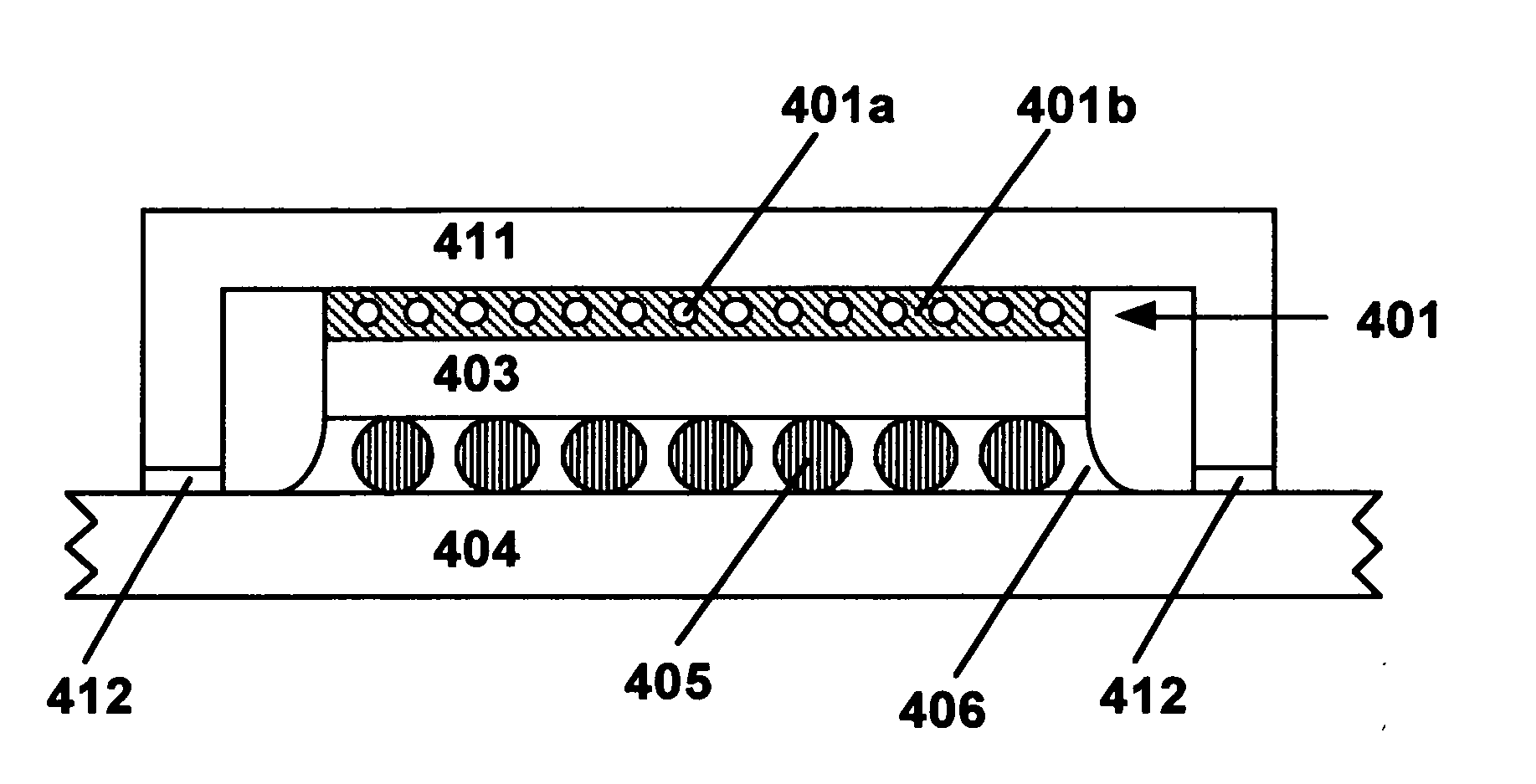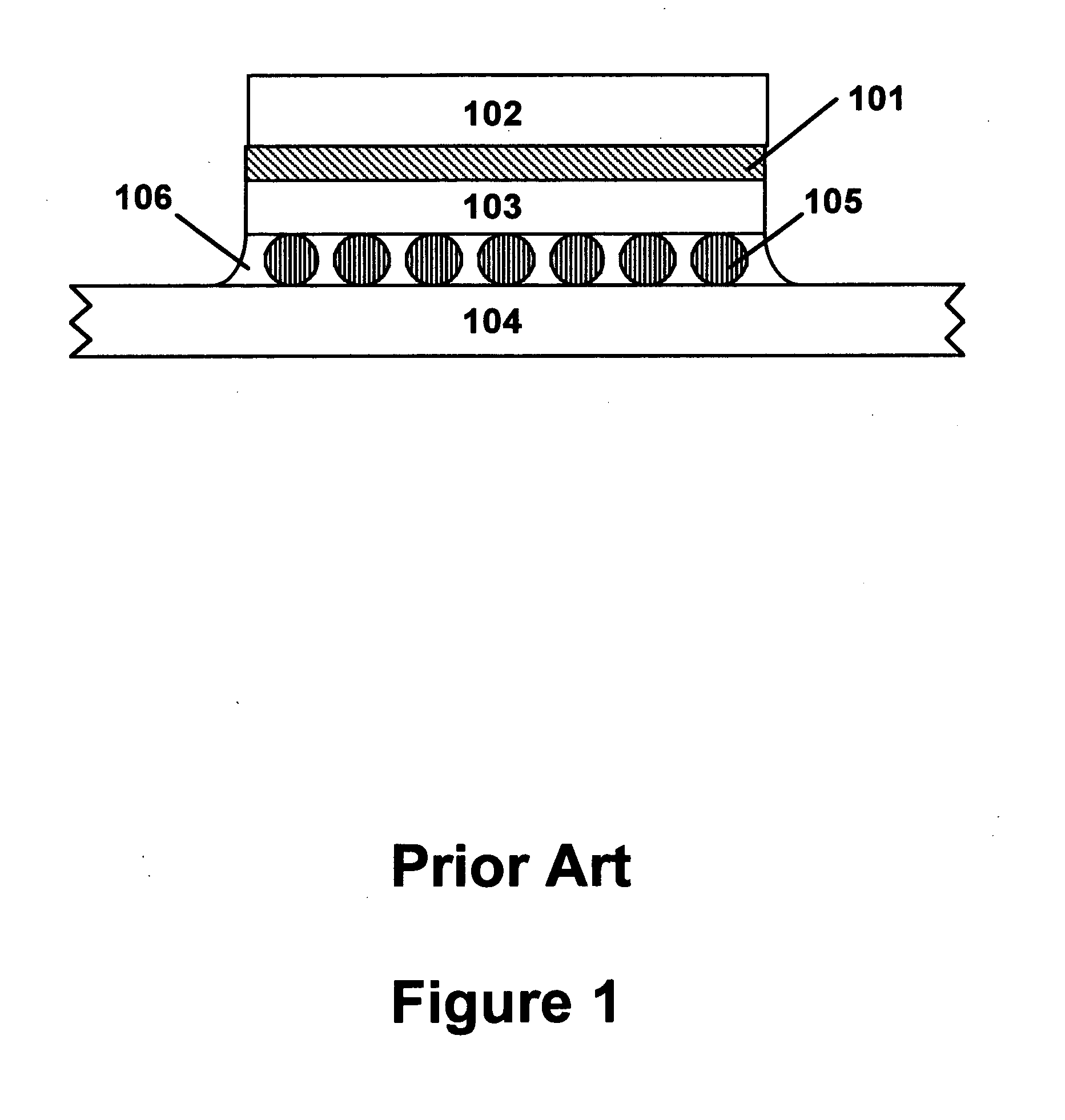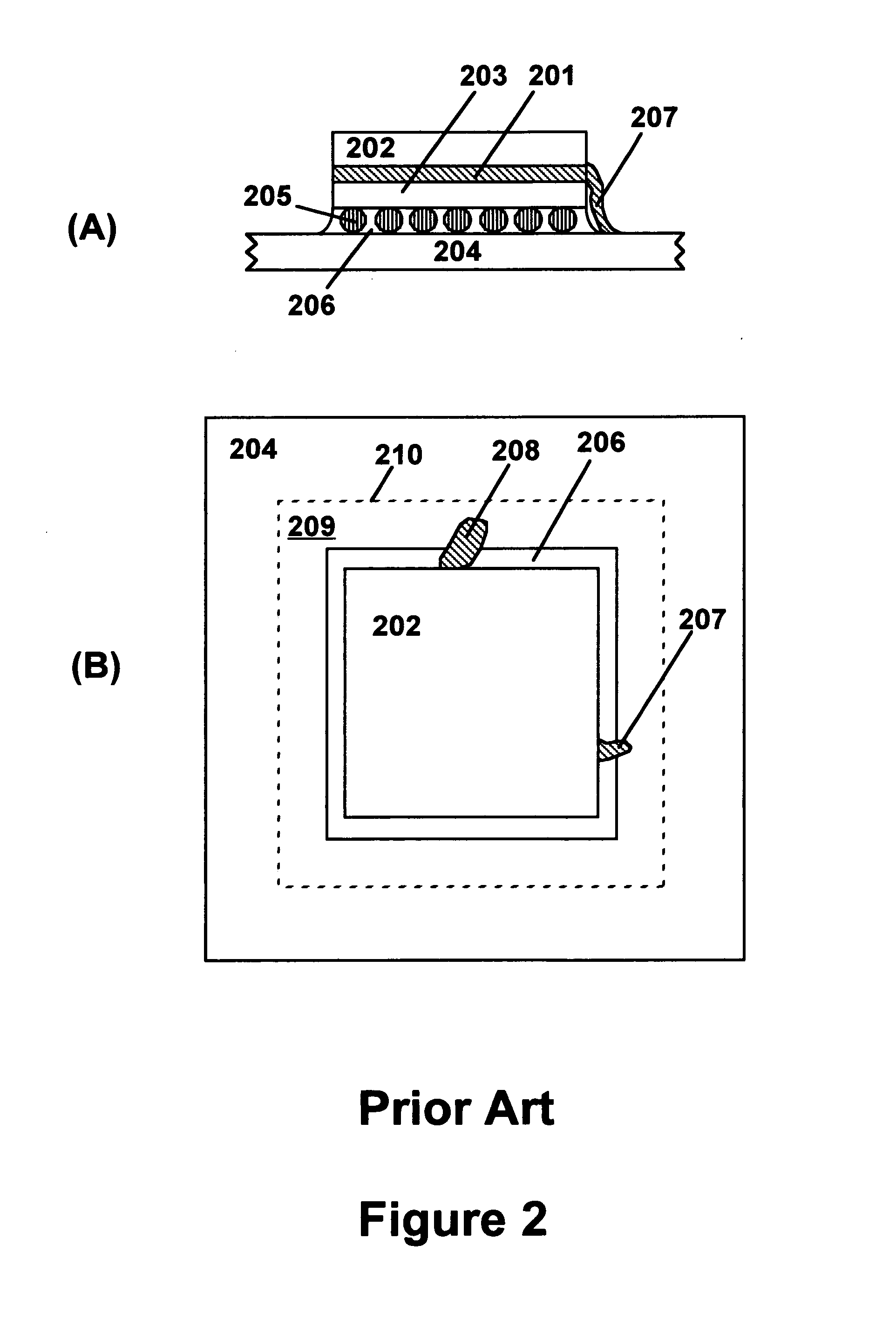Microelectronic thermal interface
a thermal interface and microelectronic technology, applied in the direction of soldering apparatus, manufacturing tools, light and heating equipment, etc., can solve the problems of reducing heat transfer efficiency, affecting the efficiency of heat dissipation, so as to achieve significant cost and performance advantages, low cost, and high thermal conductivity
- Summary
- Abstract
- Description
- Claims
- Application Information
AI Technical Summary
Benefits of technology
Problems solved by technology
Method used
Image
Examples
example 1
Feasibility Demonstration
[0052]A piece of 100×100 mesh copper screen (Dorstener Wire Technology) approximately 6×12 mm on the sides was placed on a ceramic coupon and one drop of Kester #186 RMA flux was added. Approximately half of the area of the copper screen was covered with a piece of indium foil that was 7 mils (0.2 mm) thick. When this assembly was placed on a hot plate set at 200° C., the indium foil reflowed and wet the copper screen well. A rigid metal plate was placed on the reflowed assembly and hit with a hammer to simulate a milling operation to smooth out observed unevenness in the reflowed indium surface. Micrometer measurements indicated that the uncoated portion of the copper screen was 9 mils thick, whereas the portion of the copper screen embedded in indium was 12 mils thick.
example 2
Simulated Thermal Interface Test
[0053]Formation of the interface of the invention was demonstrated using a test structure comprising rectangular pieces (1.0×1.5 cm) of a pure indium foil (9 mils thick) and a 100×100 mesh copper screen sandwiched between first and second coupons of FR-4 laminate material coated with an ENIG (electroless nickel immersion gold) coating. The procedure was as follows. An aliquot (5 μL) of Kester #186 RMA flux was pipetted onto the top of the first coupon. The piece of copper screen was placed on the fluxed surface of the first coupon, and the piece of indium foil was placed on the copper screen. An aliquot (5 μL) of Kester #186 RMA flux was pipetted onto the top of the indium foil. The second coupon was placed on top of the fluxed indium foil. This test structure, held together with a spring clip, was passed through a reflow oven having a four-minute temperature profile that peaked at 170° C. The reflowed indium wetted all solderable surfaces well, embed...
example 3
Pressure Embedded Copper Grid
[0054]The feasibility of pressing a metallic grid into a solder material to form the thermal interface of the invention was demonstrated using the test structure, soldering flux and reflow conditions of Example 2. In the present case, the copper screen was first treated in Kester #5520 Copper-Nu™ to remove surface oxides, and was then rinsed and dried. The deoxidized copper screen was then dipped in the soldering flux and dried in warm flowing air to remove flux volatile materials. This pre-fluxed copper screen was then pressed into the indium foil by roller milling to form a preform. An aliquot (5 μL) of Kester #186 RMA flux was pipetted onto both sides of the preform, which was then sandwiched between the first and second coupons. This test structure, held together with a spring clip, was passed through a reflow oven having a four-minute temperature profile that peaked at 170° C. The reflowed indium wetted all solderable surfaces well, embedding the co...
PUM
| Property | Measurement | Unit |
|---|---|---|
| angle | aaaaa | aaaaa |
| diameter | aaaaa | aaaaa |
| thick | aaaaa | aaaaa |
Abstract
Description
Claims
Application Information
 Login to View More
Login to View More - R&D
- Intellectual Property
- Life Sciences
- Materials
- Tech Scout
- Unparalleled Data Quality
- Higher Quality Content
- 60% Fewer Hallucinations
Browse by: Latest US Patents, China's latest patents, Technical Efficacy Thesaurus, Application Domain, Technology Topic, Popular Technical Reports.
© 2025 PatSnap. All rights reserved.Legal|Privacy policy|Modern Slavery Act Transparency Statement|Sitemap|About US| Contact US: help@patsnap.com



